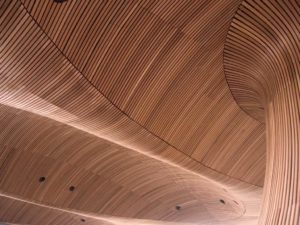Contractors involved in building and construction in California face lawsuits in regularly, based on their widespread involvement in the industry of building and construction in which there are numerous specific legal protections and rights afforded to owners and developers who hire these contractors, and there are specific standards in the law that govern the work that contractors perform, from licensing to industry and trade standards, to strictly complying with the plans and specifications, as well building codes and contractors contractual and financial obligations.
Basis for Lawsuits
Lawsuits arise when these laws and rights are violated by the contractor and the contractor is held accountable. There are numerous layers of protections, beginning with the State Contractors License Board licensing regime, coupled with very specific requirements that are contained in the Business & Professions Code, which include, for example, specific statutory and disciplinary sanctions for conduct that deviates from accepted trade standards or from the plans and specifications, B&P Code § 7109, breach of contract, B&P Code § 7113, variance from the license, B&P Code § 7117, failure to pay money and diversion of funds, B&P Code § 7120 and 7108, lack of diligence, B&P Code § 7119, willful or fraudulent injury, B&P Code § 7116 and abandonment of a project , B&P Code § 7107. Approved plans and specifications and the building codes that govern all plans and all construction provide another layer of strict legal requirements, of which a violation is not only a violation of the business and professions code, but of the plans and codes themselves, which are independent legal requirements. Beyond this, there are common law protections afforded to every party based on breach of contract, express and implied warranties (which exist the sale of all new home construction in California), fraud and actions for injury to real property.

Developments in the Law
And, while there have been significant developments in the law, specifically Aas v. Superior Court (2000) 24 Cal.4th 627, which somewhat aligned the damages recoverable on construction defect claims for negligence and strict liability with insurance coverage for contractors by requiring property damage, and SB800, the so call Right to Repair Act, which applies to original construction of new homes intended for sale, and which established a defined set of standards, in terms of construction standards, proof and damages, as well as statutes of limitation, but which, similar to Aas, left common claims, such as breach of contract and fraud, untouched and specifically excluded from the reach of both Aas and SB800, the Right to Repair Act. Although the Right to Repair Act includes a pre-litigation procedure for the builder to exercise its right to repair, and has the right to enforce stay an action by the owner and enforce the pre-litigation provisions against an owner/claimant who seeks to avoid this procedure, if, at any time, whether in the purchase agreement or at any time thereafter, if the builder fails to strictly comply with any of the notice provisions of that Chapter, then the owner is released from the obligations of that Chapter, the builder is no longer entitled to the pre-litigation procedures, which is in effect the right to repair, and the owner-claimant may proceed with filing an action. Not only “may” the owner proceed with filing an action, but Civil Code §§ 920 and 930, specifically refer to a “right” to file an action. The standards of the Act still apply, such as the building and warranty standards of Civil Code § 896, but the owner is free to file the action in court, has a “right” to do so and the owner’s common law claims for breach of contract, breach of express warranty, statutory violation (violation of the business & professions code, the plans and building codes), as well as fraud and claims for personal injury arising are specifically and definitively excluded from the Act. Where the builder fails to strictly comply with the notice and all other requirements of the pre-litigation procedures, not only does the owner then have a right to file an action, but because various statutes of limitation, both within the Act, for example Civil Code § 896 and § 941, and outside of the Act, for breach of contract, fraud and injury to real property apply, and unless an action is filed, these statutes may run and bar the claim. The better course of action in all new home defect situations is to file the action to protect the claim, and if a stay of the action is sought by the builder, the builder would have to prove its entitlement to the stay and full compliance with all the notice provisions, as well as maintain strict compliance throughout the pre-litigation procedure. If a stay is merited, the action would remain filed but stayed and the statues of limitation protected. If a stay is not merited and the builder has failed to comply, then the owner’s right to file an action will have been satisfied.

Violations and Patterns in Contractor Lawsuits
Fundamentally, the reason contractors face lawsuit is primarily due to their violation of the foregoing laws and standards, and most often, quite simply, violations of the plans and specifications and the associated building codes and industry standards, which results in defects that become apparent and which damage the structure, damage the properties’ value and marketability and of course, damage the owner-investor as well.
3 Common reasons for these lawsuits are
1) Defects, and related to performance.
2) Financial, related to performance, but based more on the accuracy or inaccuracy of various charges and accounting, and finally.
3) Fraud, a result of intentionally dishonest and unscrupulous practices that give rise to a combination of the first 2., that is defects and financial problems.
Defects are simply deviations from the plans, codes and standards. These occur due to improper and inadequate supervision, incompetent subcontractors who are not sufficiently supervised and are rarely accidental. Cost cutting and inaccurate and inflated billing, false overcharges, false and fraudulent change orders and willfully dishonest financial practices drive the financial component of these lawsuits. Likewise, these discrepancies and irregularities are rarely accidental, but are frequently the result of a systematic and calculated scheme to slip hidden fees into the billing and payment process. The combination of defects and financial discrepancies often go hand in hand.
The Solution: Norton & Associates
For a consultation on construction defects and any related financial or accounting issues related to any construction project, contact us today for an appointment at (310) 706-4134 or make an appointment online.


